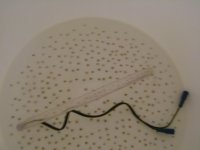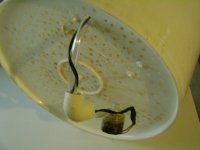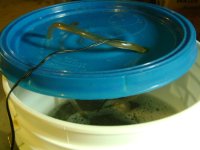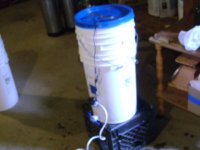Maine Homebrewer
Grandmaster Brewer
My sparge system is a drilled out brew-bucket inside a bottle-bucket.
With all that dead space, recirculating is a must.
I usually reserve two and a half, three (of six) gallons sparge water for fly sparging, and the remaining goes in the lauter tun for recirculating. Kinda like a hybrid batch-fly system. I recirculate it until it's clear, drain it to the surface of the grain, and then start the fly sparge.
But draining it out and pouring it back in over and over is a pain.
I was thinking of putting a hole in bottom of the drilled out bucket, near but not on the edge, that could fit an auto siphon like the ones used for racking. Then cutting out most of the top of a lid, leaving enough to cut a matching hole for the auto siphon and another for the return tube. I would have to be careful not to create too much suction and plug up the false bottom, but other than that it seems to me like a good idea. Better than pouring it back in over and over and over...
Be like churning butter, only a lot slower.
Oh, and my spinning sparge arm won't be able to spin, but that's fine.
Does anyone see any flaws in my plan? Thought I might seek a second opinion before chopping things up.
With all that dead space, recirculating is a must.
I usually reserve two and a half, three (of six) gallons sparge water for fly sparging, and the remaining goes in the lauter tun for recirculating. Kinda like a hybrid batch-fly system. I recirculate it until it's clear, drain it to the surface of the grain, and then start the fly sparge.
But draining it out and pouring it back in over and over is a pain.
I was thinking of putting a hole in bottom of the drilled out bucket, near but not on the edge, that could fit an auto siphon like the ones used for racking. Then cutting out most of the top of a lid, leaving enough to cut a matching hole for the auto siphon and another for the return tube. I would have to be careful not to create too much suction and plug up the false bottom, but other than that it seems to me like a good idea. Better than pouring it back in over and over and over...
Be like churning butter, only a lot slower.
Oh, and my spinning sparge arm won't be able to spin, but that's fine.
Does anyone see any flaws in my plan? Thought I might seek a second opinion before chopping things up.





